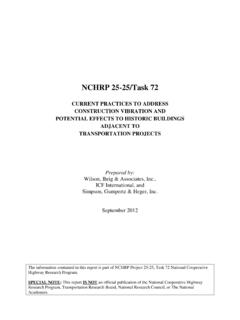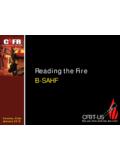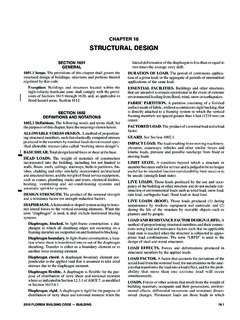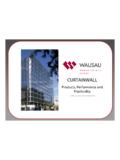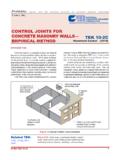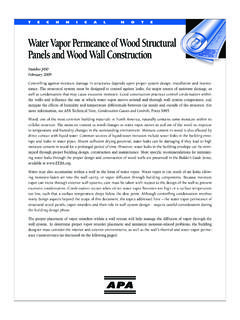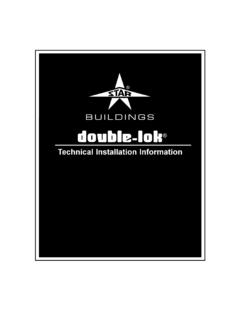Transcription of Plate Tectonics - VDOE
1 Science Enhanced Scope and Sequence Grade 5 virginia department of education 2012 1 Plate Tectonics Strand Earth Patterns, Cycles, and Change Topic Investigating Plate Tectonics Primary SOL The student will investigate and understand how Earth s surface is constantly changing. Key concepts include e) changes in Earth s crust due to Plate Tectonics . Related SOL The student will investigate and understand how Earth s surface is constantly changing. Key concepts include d) the basic structure of Earth s interior. Background Information The Earth s crust is made up of seven large, very rigid plates, which are moving at different speeds and sometimes colliding.
2 Plate boundaries occur where two plates meet. There are three different kinds of boundaries, which are defined by how the plates were formed and how they are moving in relation to each other: Divergent boundaries. Divergent boundaries occur along spreading centers where plates are moving apart and new crust is being created by magma pushing up from the mantle. The Mid Atlantic Ridge in the Atlantic Ocean is such a boundary. It extends from the Arctic Ocean to the tip of Africa and is one of the longest mountain ranges in the world. Convergent boundaries. Convergent boundaries occur where plates are moving toward each other, sometimes forcing one Plate to slide under the other Plate and at other times pushing both plates upward.
3 This usually takes place where an oceanic Plate and a continental Plate , two oceanic plates, or two continental plates come together. This type of collision of plates formed the Himalayas and the Rocky Mountains. Transform boundaries. Transform boundaries occur where two plates slide against each other in opposite directions. This movement is the cause of many earthquakes, such as those along the San Andreas Fault in California. These can also be called sliding or strike slip boundaries. Volcanoes are vents in the surface of the Earth through which magma and associated gases and ash erupt. They are also the structure (usually conical) that is produced by the ejected material.
4 Earthquakes are the shaking, rolling, or sudden shock of the Earth s surface caused by the movement of the Earth s plates, usually the sliding of two Plate boundaries against each other. Earthquakes can be measured using a Richter scale, which rates the degree of shaking on a scale from 1 to 7 with 7 being the most severe and anything a 2 or less not being felt at all. Materials Premade vanilla frosting Graham crackers Wax paper Copies of the attached worksheet Plate Tectonics Science Enhanced Scope and Sequence Grade 5 virginia department of education 2012 2 Vocabulary Plate Tectonics , volcano, earthquake, convergent, divergent, Richter scale Student/Teacher Actions (what students and teachers should be doing to facilitate learning) Introduction 1.
5 Start a class discussion by asking students what they already know about earthquakes. Ask them if they know what they are and how they occur. Ask students where they have heard most earthquakes occur in the United States (California). 2. Ask students to think about the Earth s crust. Explain to them that although they often see the Earth s model crust as smooth and even, the actual crust of the Earth is divided into seven large plates, which move and sometimes collide with each other. Explain that there are three ways that the plates can move in relation to each other, and tell the students that they will be simulating that movement in this activity.
6 Procedure 1. Group students into pairs, and give a piece of wax paper and a copy of the attached worksheet Plate Tectonics to each pair. Place a spoonful of frosting on the wax paper for each pair of students. The frosting represents the layer of lava, or the mantle, on which Earth s crust floats. 2. Give each pair of students one long graham cracker broken in half. The two halves represent two of Earth s plates. 3. To model the first way the plates can move in relation to each other, students place the graham crackers side by side gently on the frosting. They slide the two crackers against each other in opposite directions, slightly bumping and scraping while sliding.
7 Explain to students that this is what happens when two plates slide and that this motion frequently causes earthquakes. Define earthquakes, and inform the students that earthquakes are frequent along the San Andreas Fault in California a famous example of a transform boundary. Be sure students observe that the frosting acts as a cushion but does not come up through the plates. Have students fill in the related blocks on the worksheet, citing earthquakes under Effects. 4. Ask students to move the graham crackers apart and observe that an opening occurs and that the frosting is clearly evident. Explain that this movement is called divergent.
8 It causes openings in the Earth s crust out of which lava may flow or in which trenches may form. Have students fill in the related blocks on the worksheet, listing the Mid Atlantic Ridge in the Atlantic Ocean as an example, and trenches, earthquakes, and mountain ranges under Effects. 5. Ask the students to push the graham crackers back together. Instruct some pairs of students to let one cracker slide under the other and other pairs to bring them together with some force, causing some cracking and breaking but causing them both to rise up into a mountain form. Explain to the students that this is an example of convergence, or coming together.
9 Again, have students fill in the related blocks on the worksheet, listing the Rocky Mountains and Himalayas, as well as the Mariana Trench (created by ocean to ocean subduction , one Plate topped by oceanic crust being subducted beneath Science Enhanced Scope and Sequence Grade 5 virginia department of education 2012 3 another Plate topped by oceanic crust), as examples of this kind of movement . Have students list mountain ranges, trenches, and volcanoes under Effects. 6. Explain that at convergent boundaries, whether the plates move under or over each other depends on what kind of plates are meeting. Two continental plates converging will cause both to move upward and mountains to form over time, while an oceanic Plate and a continental Plate converging will cause one Plate to move below the other.
10 Volcanoes can form when this occurs. Students who forced one cracker below another should be able to observe some of the frosting leaking up onto the upper cracker, which represents the formation of volcanoes from this type of action. Conclusion 1. Have students look over their Plate Tectonics chart to ensure they have completed each of the entries. 2. As they finish, allow students to choose a type of boundary to imitate with their graham crackers and have their partner guess what type of boundary they are creating. Assessment Questions o What is the difference between convergent and divergent Plate movement ? o Which movement causes mountains to form and why?










